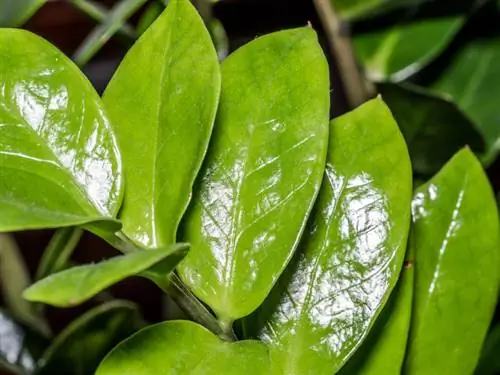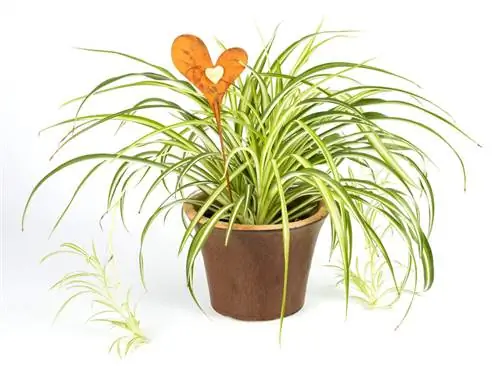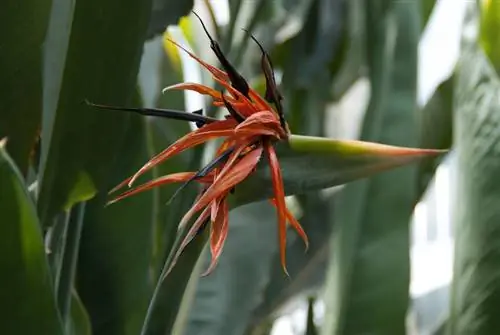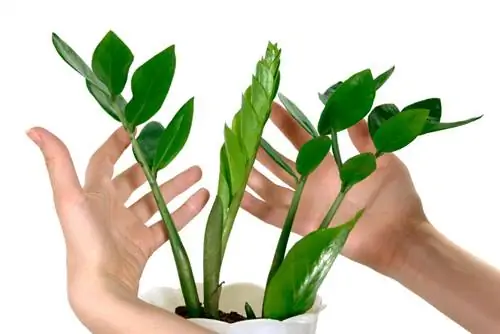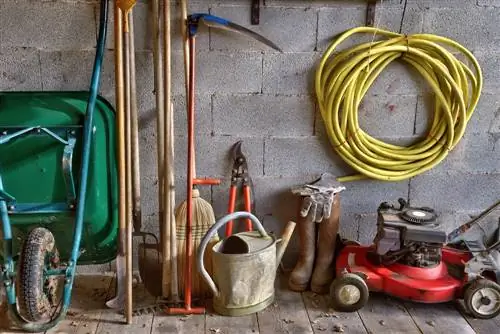- Author admin [email protected].
- Public 2023-12-16 16:46.
- Last modified 2025-01-23 11:20.
Imposing, with lush green foliage and up to one meter high or even higher: the Zamioculcas zamiifolia, also known as the lucky feather or cardboard palm, is an attractive and popular houseplant. The leaf stalks, thickened at the base with strong pinnate leaves, grow tightly upright directly from a fleshy, thick rhizome. Under good conditions and appropriate care, the plant can grow very large and just as extensive - however, pruning is not recommended in this case either.
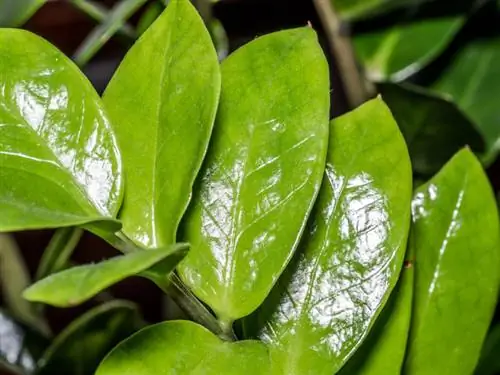
When should you cut a Zamioculcas?
Cutting a Zamioculcas is usually not necessary, but it can be useful if individual petioles dry out, rot or are severely bent. In such cases, you should cut off the affected stems directly above the ground, preferably with a clean, sharp knife.
Don't cut large plants, divide them
In short: cutting the zamioculcas is not necessary. As soon as the plant becomes too large and threatens to burst its pot, repot it and divide it into several individual plants. You just have to make sure that the different rhizome pieces each have at least one strong shoot. After repotting, the newly divided plants will quickly sprout again. Even if a leaf dies, cutting it off is essentially unnecessary. Just wait until the plant has extracted all the nutrients from it, then you can simply pull out the leaf.
When cutting still makes sense
Sometimes, however, it can happen that a cut makes sense. Be sure to grab scissors or a sharp knife
- when one or more leaf stems turn brown and dry up
- if one or more leaf stems rot
- if one or more petioles have been severely bent
Cut the affected stem directly above the ground and be sure to use clean and sharp tools for this. Prefer a knife, as using scissors can crush the stems. In most cases, such a cut does not cause any harm to the plant; it continues to sprout again - but not from the cut stump, which simply remains standing.
Simply tie up very long leaf stems
If the stems of a Zamioculcas become very long, there is a risk of them breaking or the stems simply hanging down unattractively. In this case, you can simply tie the leaf stems together with a piece of raffia or something similar.
Tip
Incidentally, you should not cut leaf cuttings, but rather pluck them off - then they will root better. You further increase the chances of success if you dip the side to be rooted in a rooting powder before planting.

